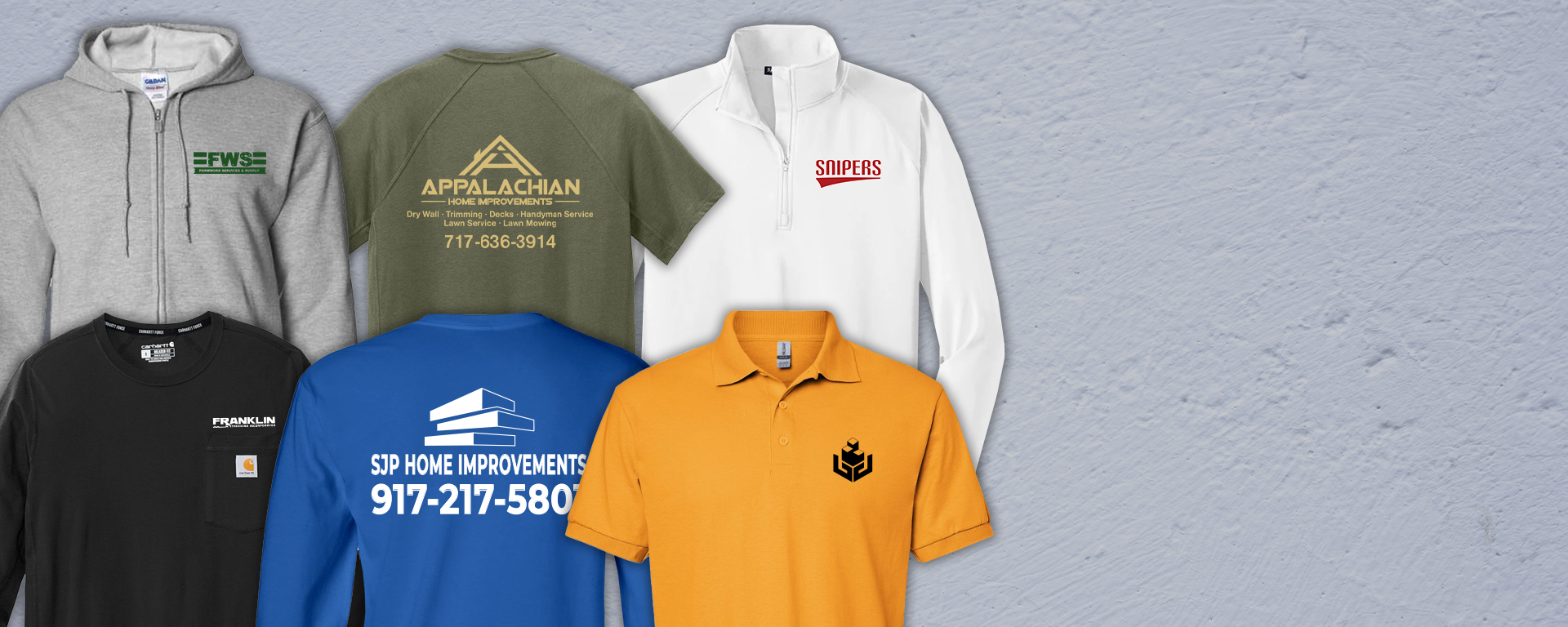How to Identify High-Quality Fabrics in Branded Clothing
Wiki Article
Comprehending Clothing: The Importance of Material Selections in Your Closet
The selection of fabric in clothing plays a crucial role in both appearances and capability. Various products use differing degrees of breathability, comfort, and sturdiness, directly affecting the user's experience. Comprehending these subtleties can boost one's closet substantially. Numerous ignore how these selections can influence not just individual style, yet also sustainability. What fabric decisions could redefine your closet and straighten it with both style and obligation?The Role of Textile in vogue and Capability

Common Material Types and Their Characteristics
When choosing clothes, understanding the characteristics of usual textile kinds is necessary for making educated choices. Cotton, a widely-used all-natural fiber, is known for its gentleness, breathability, and adaptability, making it ideal for informal wear and day-to-day garments. Bed linen, another all-natural option, flaunts outstanding moisture-wicking residential or commercial properties and a distinct structure, suitable for warm climates.Wool, often favored for its warmth and longevity, differs in excellence; merino wool is soft against the skin, while coarser kinds are used for outerwear. Artificial textiles like polyester and nylon supply sturdiness and resistance to creases, making them prominent for activewear and traveling garments. Finally, blends, which combine synthetic and natural fibers, can boost capability while preserving comfort. By identifying these textile characteristics, people can select clothes that lines up with their way of life and visual preferences.Breathability and Convenience: Choosing the Right Fabrics for Various Climates
Picking the best textiles for different climates can significantly improve convenience and overall wearability. Breathable materials are vital in warm climates, as they permit air flow and dampness evaporation. Fabrics such as cotton, bed linen, and moisture-wicking synthetics efficiently attract sweat far from the body, keeping the user cool and dry. Alternatively, in cooler climates, thicker textiles like woollen or fleece give insulation while keeping breathability, guaranteeing warmth without overheating.Additionally, the option of textile weight plays an important role; light-weight textiles are more effective for summer, whereas larger options are matched for winter wear. Understanding the unique buildings of each textile allows individuals to dress appropriately for varying climate condition. Ultimately, picking comfy and breathable materials tailored to specific climates can greatly improve daily convenience and improve the total experience of putting on clothes.Sturdiness and Treatment: Just How Fabric Influences Long Life of Your Closet
Choosing the best products can considerably affect the resilience and care requirements of a closet. Fabrics such as cotton and polyester are understood for their strength and convenience of upkeep, making them optimal for everyday wear. In comparison, fragile materials like silk and lace need even more cautious handling and specialized cleansing techniques, which can raise the time and effort required for care. Branded Clothing.Durability is also affected by the textile's weave and surface; tightly woven materials tend to resist deterioration far better than freely woven options. Additionally, synthetic blends usually provide improved sturdiness, incorporating the most effective qualities of several fibers.Understanding the care guidelines for each and every fabric is important, as inappropriate washing or drying can cause premature wear. Inevitably, selecting long lasting products can lead to a longer-lasting closet, decreasing the regularity of substitutes and contributing to a much more sustainable fashion selectionThe Impact of Textile on Fit and Silhouette

Lasting Material Choices: Making Eco-Friendly Decisions
The impact of textile prolongs beyond fit and silhouette to incorporate ecological aspects, prompting an expanding passion in lasting material selections. Environmentally friendly fabrics, such as natural cotton, hemp, and Tencel, are gaining grip amongst customers who prioritize sustainability in their closets. These products are usually produced with less chemicals and water, minimizing their ecological footprint.Additionally, recycled textiles, made from post-consumer waste, supply a cutting-edge service to the textile sector's pollution trouble. Brands increasingly accept openness in their sourcing methods, permitting consumers to make enlightened choices regarding their purchases.Choosing sustainable materials not just supports honest practices but additionally encourages the apparel industry to take on more responsible production techniques. As recognition of ecological concerns increases, individuals are prompted to review the lasting effect of their textile options, fostering a motion in the direction of a more lasting and eco mindful strategy to fashion.
Elevating Style: Exactly How Fabric Can Change a Clothing
While numerous may concentrate on color and cut when picking an attire, the option of material plays a necessary role in raising design and enhancing general appearance. Various materials convey distinct state of minds and messages; for instance, silk emanates luxury and elegance, while denim supplies a casual, unwinded vibe. The structure and drape of a textile can considerably alter the silhouette, with structured textiles offering a refined look and softer ones developing a more fluid, unwinded aesthetic.Moreover, the weight of the textile influences wearability across periods. Lightweight textiles like bed linen and cotton are suitable for summer season, while larger materials such as woollen and velour provide warmth and sophistication in colder months. Understanding fabric residential or commercial properties, such as find out here now breathability and stretch, also empowers individuals to make informed options that enhance comfort without compromising design. Eventually, the ideal fabric can change an attire from normal to amazing, making it a vital consideration in any closet.Frequently Asked Concerns
How Do I Recognize the Fabric Content of My Apparel?
To identify fabric content, one can analyze treatment labels, conduct burn examinations for fiber identification, or speak with textile swatches. These approaches help set apart products, guaranteeing notified choices for clothes care and upkeep in everyday wear.Can Textile Choice Affect My State Of Mind or Self-confidence?
Textile option can substantially affect a person's state of mind and self-confidence. Branded Clothing. Specific materials may evoke sensations of convenience or elegance, while others can really feel restrictive or uncomplimentary, ultimately influencing self-perception and psychological well-being throughout the dayWhat Fabrics Are Finest for Delicate Skin?
For people with sensitive skin, natural materials like linen, cotton, and bamboo are commonly advised. These products are breathable, hypoallergenic, and less likely to create irritability, making them suitable options for convenience and skin health.Exactly how Do I Properly Laundry and Take Care Of Different Fabrics?
To effectively care and clean for various textiles, one should consider each material's particular demands, consisting of temperature level setups, cleaning agents, and drying approaches, making certain long life and keeping the material's initial high qualities for optimal usage.Exist Specific Fabrics for Athletic or Performance Wear?
Sports or performance wear frequently uses textiles such as polyester, nylon, and spandex. These news materials are made for moisture-wicking, breathability, and adaptability, boosting activity and comfort throughout physical tasks while supplying sturdiness and assistance. On the other hand, in cooler climates, thicker materials like wool or fleece give insulation while maintaining breathability, making sure warmth without overheating.Additionally, the option of textile weight plays a crucial role; light-weight fabrics are preferable for summer season, whereas heavier alternatives are suited for winter wear. In comparison, fragile products like silk and shoelace need even more cautious handling and specialized cleaning approaches, which can boost the time and effort needed for care.Durability is likewise influenced by the material's weave and coating; tightly woven textiles tend to resist wear and tear much better than freely woven options. In comparison, stiff materials can limit activity yet offer a traditional, polished look.Moreover, the density and structure of the material can affect the aesthetic perception of body form. The impact of fabric prolongs past fit and silhouette to include ecological factors, motivating a growing rate of interest in lasting fabric choices. The structure and drape of a fabric can significantly modify the shape, with organized fabrics supplying a sleek appearance and softer ones producing an extra fluid, loosened up aesthetic.Moreover, the weight of the material influences wearability throughout periods.Report this wiki page